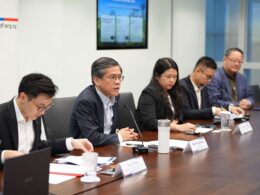The Trump administration has announced a sweeping new artificial intelligence strategy aimed at expanding U.S. dominance in the field, easing environmental regulations, and significantly increasing exports of AI technologies to allied nations. The plan marks a sharp departure from the more restrictive approach of the Biden administration.
President Donald Trump unveiled the blueprint in a speech on Wednesday, declaring the U.S.–China tech rivalry as a defining battle of the century. “America is the country that started the AI race. And as President of the United States, I’m here today to declare that America is going to win it,” he said.
The new action plan includes around 90 policy recommendations, ranging from relaxing environmental regulations to centralising federal oversight of AI, replacing what the administration described as a patchwork of restrictive state laws. Trump emphasised the need for a “single federal standard” to govern AI development nationwide.
The initiative also opens the door to full-stack AI export packages, encompassing hardware, software, and industry standards. Michael Kratsios, head of the Office of Science and Technology Policy, said the Commerce and State Departments would partner with tech companies to deliver secure AI exports to “America’s friends and allies around the world.”
The export drive is expected to benefit leading tech giants such as Nvidia, AMD, Google, Microsoft, Meta, and OpenAI, which stand to gain from expanded access to overseas markets.
As part of the rollout, Trump signed three executive orders, including one to loosen environmental permitting requirements for data centres and associated infrastructure, one to establish AI chip export rules, and another aimed at curbing perceived political bias in AI systems. The administration also plans to streamline approvals under the Clean Water Act and National Environmental Policy Act, enabling faster construction of data centres on federal land.
Vice President JD Vance echoed Trump’s sentiments, warning that overregulation could allow China to catch up. “If we’re regulating ourselves to death and allowing the Chinese to catch up, that’s not something to blame China for, but our own leaders,” he said at the event, co-hosted by White House AI and crypto adviser David Sacks and his “All-In” podcast team.
The new plan also rescinds several Biden-era policies, including the AI diffusion rule that capped AI chip exports and an executive order promoting competition and consumer protections in AI systems. Biden had implemented these measures to prevent U.S. adversaries from exploiting advanced chips for military use.
While the Trump administration had earlier blocked exports of Nvidia’s H20 chip to China in April over security concerns, those restrictions were lifted earlier this month—prompting rare criticism from within Republican ranks.
The blueprint also hints at future energy policy shifts to support the power-intensive demands of AI infrastructure. With U.S. electricity consumption reaching record highs due to a surge in data centres, additional actions are expected in the coming weeks to ensure stable power supplies for Big Tech.
The move follows a precedent set earlier this year, when the U.S. allowed the United Arab Emirates expanded access to advanced AI chips after previously restricting them due to national security concerns.





















